What Is A Safety Razor? — A Complete Guide
Through the years, razors have truly evolved. They've transformed from the traditional copper straight razor into safety and cartridge razors, among others. Safety razor blades have been a common sight in many households for over two decades. Yet, their popularity was overtaken by disposable cartridge razors due to their convenience and ease of use.
Despite this shift, recent trends have shown safety razors making a comeback. More and more people are noticing the superior shaving experience they offer. Moreover, they provide the added benefit of causing less irritation, making them an excellent choice for sensitive skin.
Switching from disposable to safety razors can seem daunting if you're accustomed to the former. But there’s no cause for worry. This article will uncover what a safety razor is, explore its advantages, and guide you on effectively using a safety razor blade.
Related Read: Zero Waste Shaving, Best Sustainable Gifts for Him.
What do safety razors look like?
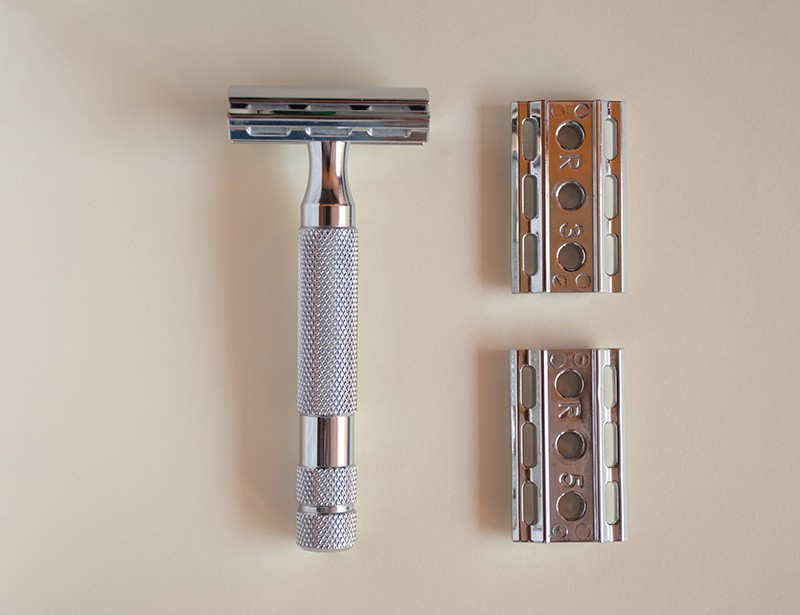
So, what is a safety razor? As seen in the picture above, a typical safety razor is a T-shaped double-edge razor that gives you a smooth, close shave. It is typically made of a razor handle, razor head, and guard. Its head contains the blade, and the guard helps to keep your skin safe while shaving.
The handle usually comes in metal, plastic, or wood. Additionally, the blades at the head are replaceable. Some come with a single head, while some have two heads for shaving and trimming.
Safety razors come in stainless steel or brass, which won't rust quickly even with continuous use. You can find different safety razor designs. Here are some safety razor types that may work best for you:
- Slant razors: These razors come with a slant head that allows you to shave your hair at an angle. With the slant, it reduces the amount of pressure on the hair and skin.
- Butterfly razors: A butterfly safety razor opens up with butterfly doors at the top, which allows you to insert and remove your blades.
- Adjustable razors: The adjustable razor allows you to change the razor blade gap - the space between the safety bar and the blade. Many shavers may want to switch from a gentle shave to a more aggressive shave, making adjustable safety razors perfect.
- Open comb razors: An open comb razor comes with openings in the safety bar, allowing the blade to be better exposed to your skin. This can be an excellent option for you if you have very thick hair, as it shaves your hair more quickly. However, you want to be careful with open combs as there is a high risk of cutting yourself.
- Closed comb razors: A closed comb razor or safety bar is a protective device that provides a layer of protection between your skin and the blade. Perfect for beginners, they offer the most protection when using double edge blades and remove any learning curve.
Benefits of using a safety razor
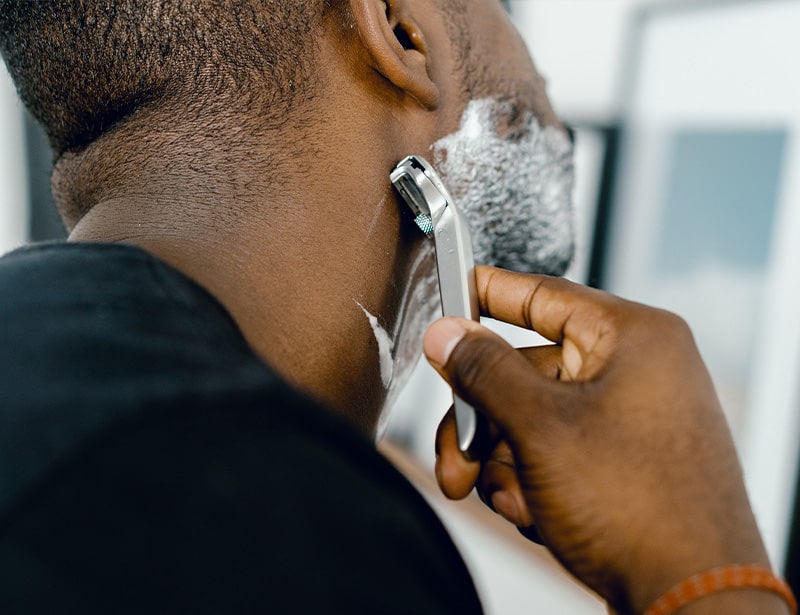
Here are a few benefits of using a safety razor:
More appealing.
Safety razors have a vintage look that appears more appealing than other modern cartridge razors. You can find a safety razor in different colors and designs, including the slant, butterfly, and adjustable razor.
Less irritation.
One of the most outstanding benefits of the safety razor is that they have no in-built lubricants and are designed with fewer blades, reducing the risk of clogged, irritated skin. The single blade delivers a closer shave, reducing the chances of your hair growing back into your skin.
Sharper than single-edge blades.
These single-blade razors are much sharper than the multi-blade razors used in the cartridge razor and give you a better shave. The first blade removes the hair for cartridge blades while the other blades scrape the skin, causing irritation, blade cuts, and a razor burn. It can also leave you prone to ingrown hairs.
On the other hand, a safety razor delivers a closer and more comfortable shave without damaging your skin. You can even shave coarse hair with just one glide.
Easier to use.
Unlike a straight razor, using a safety razor significantly simplifies shaving. Its single, visible blade allows for better control and precision during your shave. They sport uncomplicated designs, and the usability is straightforward – you secure a blade to the razor head and reattach the handle.
However, caution is key when handling these efficiently sharp, double-edged blades.
Cheaper blade replacement.
In the long run, safety razors are more cost-effective. While they may have a higher upfront cost, they can last longer, saving you money, unlike buying cartridge razors multiple times within a short period. Plus, they are more sustainable than disposable razors.
How to use a safety razor blade
The process may seem confusing if you've never used safety razor blades. But not to worry, here's a guide on how you can use a safety razor to get the best shave:
1. Get all you need for a shave
The first thing to do is get all the things you need for a shave. You will want to get a high-quality razor that can stay sharp for longer. Here are a few safety razor options you can consider:
Rockwell Razors 6S Adjustable Double-edge Razor
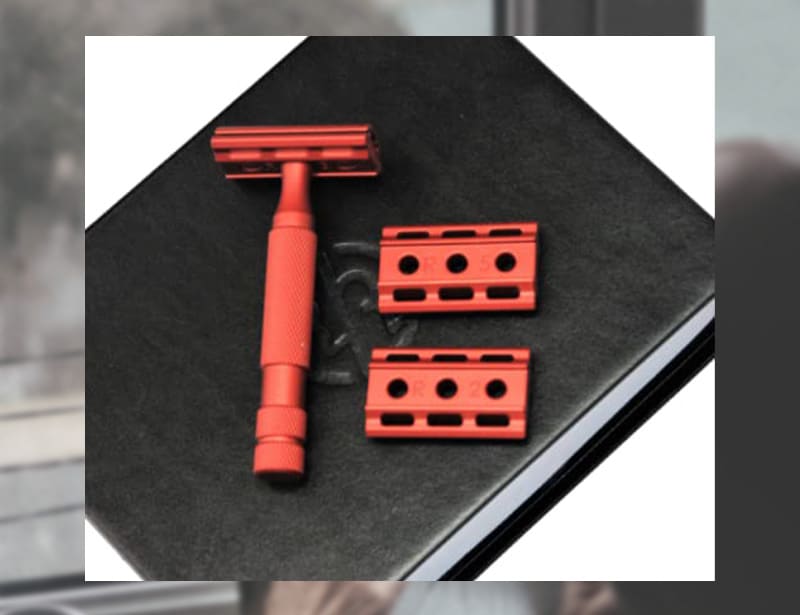
Made with pure, durable stainless steel, this double-edge safety razor is an excellent alternative to the regular disposable razor. It has six adjustable shave settings to give you a clean shave no matter your hair type.
This razor comes in a box with five blades. These stainless steel replacement blades can last up to a month, saving you money. It's not the cheapest option, but well worth a look for something that will last and looks great, too.
Parker 22R Safety Razor
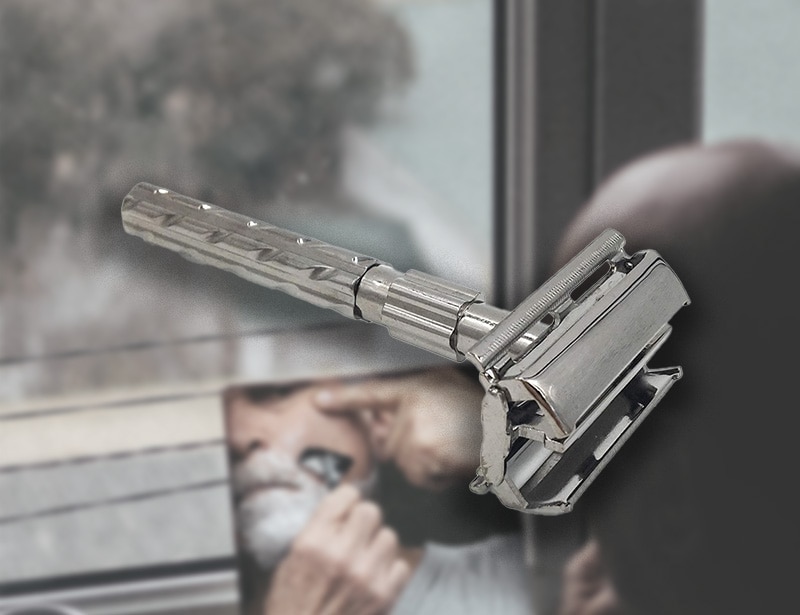
The Parker 22R is a more weighted safety razor that goes through the toughest beards with one shave, eliminating razor burns, ingrown hairs, and shaving bumps. These one-piece razors have a twist mechanism that opens up at the top cap consisting of two hinged plates for switching razor blades.
It comes with a pack of five more blades for long-lasting shaves and is both affordable and great looking.
Apart from your safety razor, you will also need a sharp blade, shaving cream, a small bowl, and a towel to clean up after shaving.
Ensure you remove used blades and start with a clean new blade. Simply unscrew the top cap of your blade, remove and wrap the blade in paper or toilet paper, toss it in the trash, and put in a new blade.
2. Get your skin ready.
Moving forward, your skin needs to be ready for the shave. Begin by using warm water to soften your hair follicles and skin. Next, apply some pre-shave oil for additional moisturizing and conditioning of your hair and skin.
Take a suitable quantity of shaving cream and spread it across the regions of your face you plan to shave. Consider using this shaving cream for an effective experience:
Dollar Shave Club Shave Butter
The Dollar Shave Club developed a great shaving cream alternative that helps soften your hair and allows you to shave with precision, reducing razor bumps and the occurrence of ingrown hairs.
Their shave butter comes in a translucent formula that allows you to see better. Plus, it is suitable for all skin types, including sensitive skin.
3. Start shaving.
Now, let's move on to your first shave. You'll want to turn your face, position your neck at an angle, and stretch the skin tight. Grasp your razor and set it at a 30 to 45-degree angle from your skin. Start the process by shaving in the direction of your hair growth.
4. Shave with the grain.
It's crucial to follow the direction of your hair growth when shaving, not against it. Therefore, familiarizing yourself with your facial hair patterns before you begin is advisable. Opt for a high-quality razor with a weighted handle—it delivers just the right amount of force without requiring you to exert additional pressure.
Shave in short strokes and rinse in between to remove excess shaving cream and hair. You can decide to flip your double-edged razor to shave fresh and avoid clogging.
5. Rinse your face.
When you've finished, it's a good idea to splash your face or skin with cold water. This helps to close your pores. If you want to avoid irritation - a real bonus if you have sensitive skin - it's worth applying a soothing after-shave balm.
Finally, make sure you clean your razor and dab it dry with a towel. Storing it in a dry place will help to prevent rust.
How to replace the blade on your safety razor
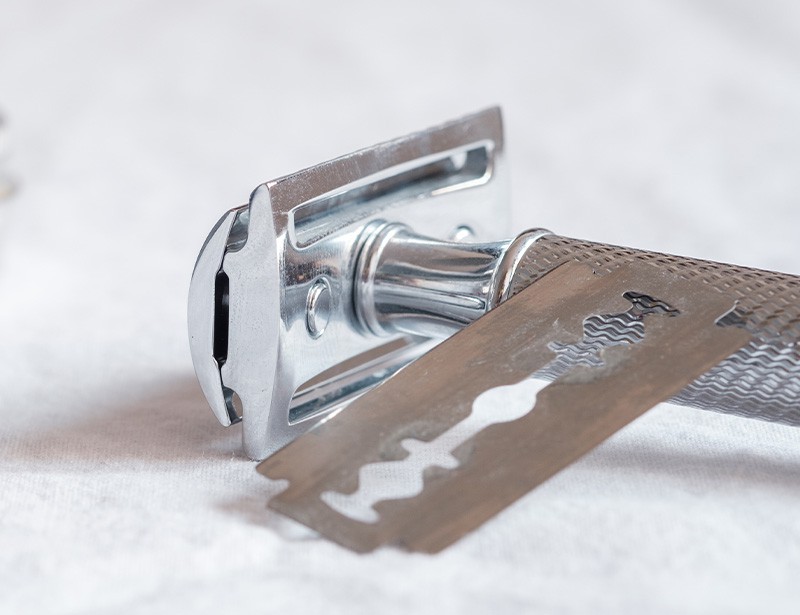
The procedure for replacing your spent blades relies heavily on your particular type of razor. If you're sporting a one-piece safety razor, a simple twist of the handle will have the cap off, ready for a blade switch.
Two-piece razors vary slightly, with the base plate affixed directly to the handle. By rotating the handle, you can remove the cap and proceed to swap the blade. Upon twisting the handle, the most widely used variant, the three-piece safety razor, disassembles into three separate parts - the handle, top cap, and base plate.
After opening the razor, take out the used disposable blade, dispose of it safely, and insert a fresh one. Fortunately, most razors come equipped with a handy guide, easing you into the routine of changing blades.
Final thoughts on safety razors
Standing strong through time, safety razors have proven their worth with exceptional durability and effectiveness. Choosing a safety razor means fewer expenses on disposables, saving you money and helping the environment. If you're a newbie to this type of razor, consult our article to gain insights on what exactly they are and how to use them with ease.
Jen’s a passionate environmentalist and sustainability expert. With a science degree from Babcock University Jen loves applying her research skills to craft editorial that connects with our global changemaker and readership audiences centered around topics including zero waste, sustainability, climate change, and biodiversity.
Elsewhere Jen’s interests include the role that future technology and data have in helping us solve some of the planet’s biggest challenges.

